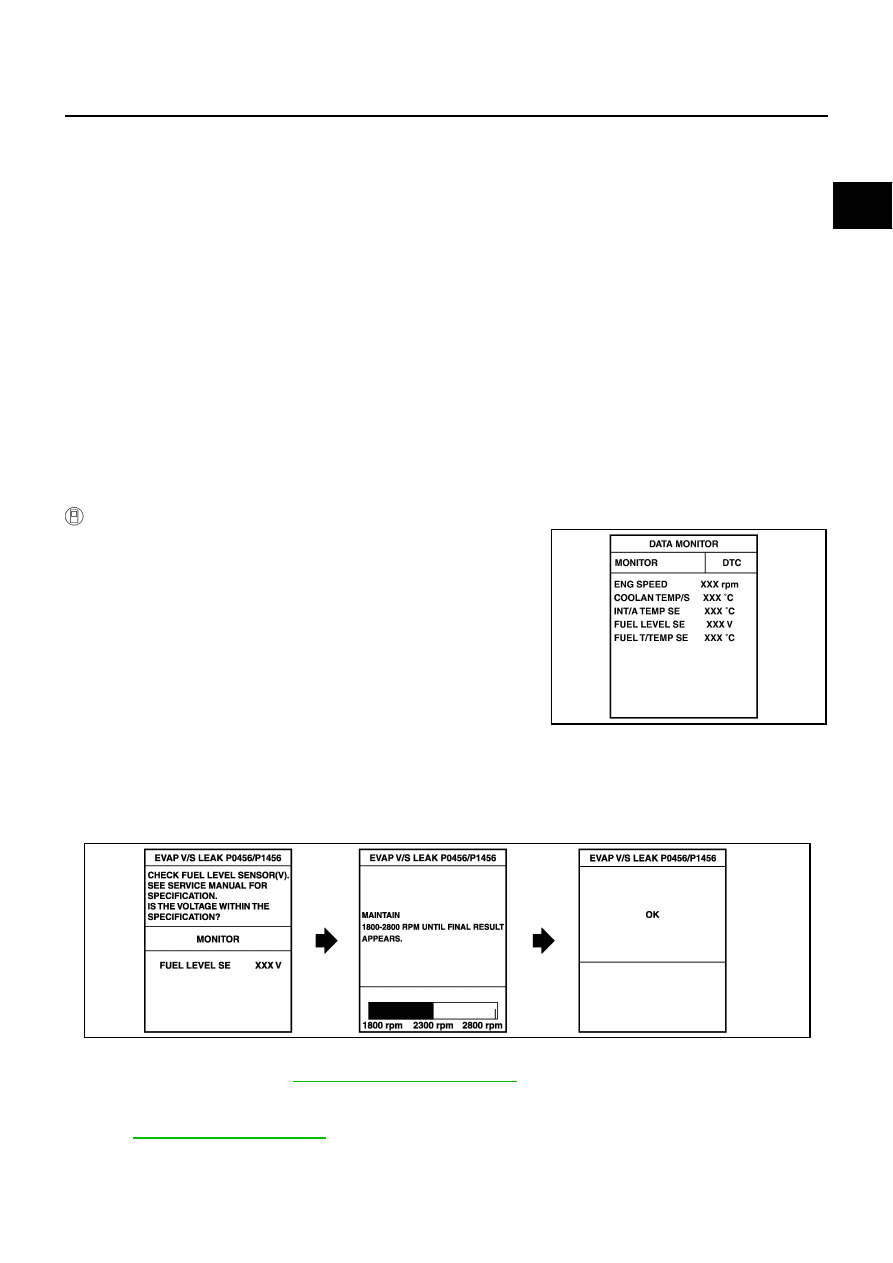Infiniti Q45. Manual - part 479

DTC P1456 EVAP CONTROL SYSTEM
EC-555
C
D
E
F
G
H
I
J
K
L
M
A
EC
CAUTION:
●
Use only a genuine NISSAN fuel filler cap as a replacement. If an incorrect fuel filler cap is used,
the MIL may come on.
●
If the fuel filler cap is not tightened properly, the MIL may come on.
●
Use only a genuine NISSAN rubber tube as a replacement.
DTC Confirmation Procedure
NBS0023C
NOTE:
●
After repair, make sure that the hoses and clips are installed properly.
●
If DTC Confirmation Procedure has been previously conducted, always turn ignition switch OFF and wait
at least 10 seconds before conducting the next test.
TESTING CONDITION:
●
Open engine hood before conducting following procedure.
●
If any of following conditions are met just before the DTC confirmation procedure, leave the vehi-
cle for more than 1 hour.
–
Fuel filler cap is removed.
–
Refilled or drained the fuel.
–
EVAP component parts is/are removed.
●
Before performing the following procedure, confirm that battery voltage is more than 11V at idle.
WITH CONSULT-II
1.
Turn ignition switch ON and select “DATA MONITOR” mode with
CONSULT-II.
2.
Make sure the following conditions are met.
FUEL LEVEL SE: 0.25 - 1.15V
COOLAN TEMP/S: 0 - 32
°
C (32 - 90
°
F)
FUEL T/TMP SE: 0 - 35
°
C (32 - 95
°
F)
INT/A TEMP SE: More than 0
°
C (32
°
F)
If NG, turn ignition switch OFF and leave the vehicle in a cool
place (soak the vehicle) or refilling/draining fuel until the output
voltage condition of the “FUEL LEVEL SE” meets within the
range above and leave the vehicle for more than 1 hour. Then
start from step 1).
3.
Turn ignition switch OFF and wait at least 10 seconds.
4.
Turn ignition switch ON.
5.
Select “EVAP V/S LEAK P0456/P1456” of “EVAPORATIVE SYSTEM” in “DTC WORK SUPPORT” mode
with CONSULT-II.
Follow the instruction displayed.
6.
Make sure that “OK” is displayed.
If “NG” is displayed, refer to
EC-557, "Diagnostic Procedure"
.
NOTE:
●
If the engine speed cannot be maintained within the range displayed on CONSULT-II screen, go
to
.
●
Make sure that EVAP hoses are connected to EVAP canister purge volume control solenoid
valve properly.
PBIB2870E
PBIB0837E